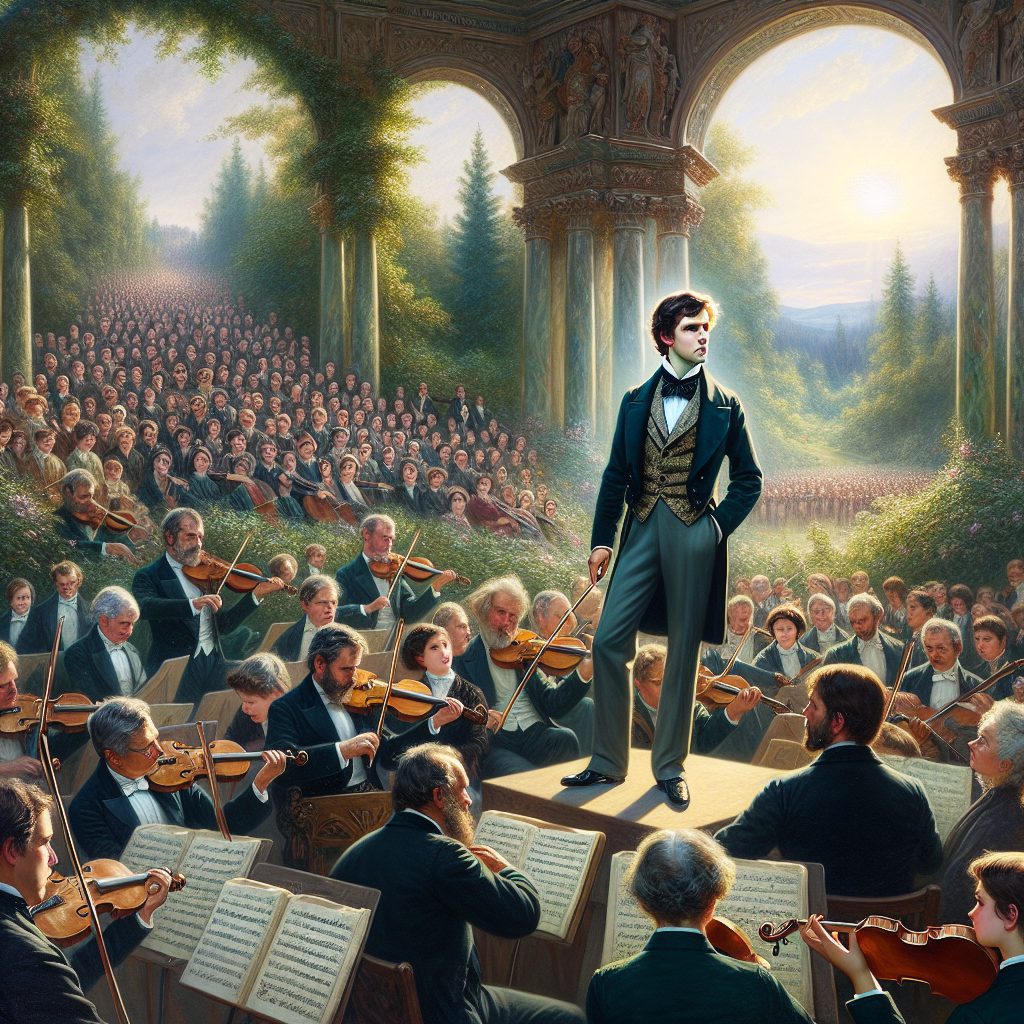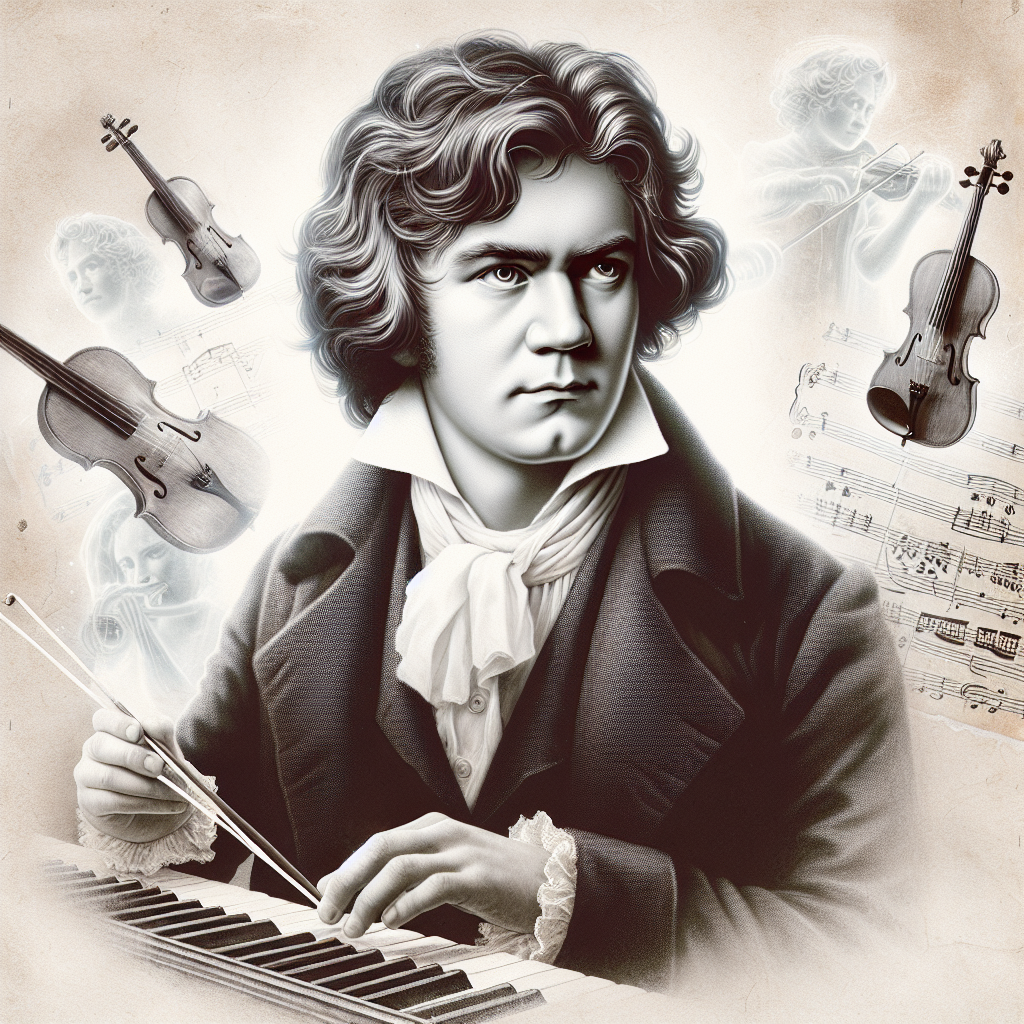
The Youthful Symphonies – Beethoven’s First Orchestral Forays
Ludwig van Beethoven, one of the most revered composers in Western music history, embarked on his musical journey at an early age, showcasing exceptional talent and creativity. His early works, particularly his symphonies, reflect a profound genius that was yet to fully blossom but already hinted at the groundbreaking compositions to come. These early and unpublished pieces are a window into the mind of a youthful Beethoven, eager to explore and push the boundaries of orchestral music. While Beethoven is widely celebrated for his monumental nine symphonies, his initial attempts at symphonic composition are equally fascinating and critical to understanding his musical evolution.
In this article, we delve into the nascent stages of Beethoven’s symphonic works. Initially mentored and influenced by prominent composers of his time, Beethoven’s first symphonic forays illustrate a blend of reverence for tradition and a budding desire to innovate. This exploration will not only highlight these early works but also provide a comprehensive biography of this phase in Beethoven’s life, detailing the struggles, influences, and relentless pursuit of musical excellence that marked his formative years.
We will examine some of his notable early symphonies, their significance, and how they contributed to his development as a master composer. Furthermore, we will look at the unpublished works that remain lesser-known yet are indispensable for a full appreciation of Beethoven’s musical legacy. By understanding these youthful symphonies, we gain insight into the remarkable journey of a man who transcended personal and professional challenges to redefine the symphonic form and leave an indelible mark on classical music.
Beethoven’s Early Influences
The young Beethoven was born into a family with musical inclinations, although not without its struggles. His father, Johann van Beethoven, recognized Ludwig’s prodigious talent early on and sought to cultivate it, albeit often in a harsh and overbearing manner. Johann’s aim was to create a child prodigy to rival Wolfgang Amadeus Mozart. Although this pressure was intense, it exposed Ludwig to rigorous musical training from a very young age.
At just seven years old, Beethoven performed publicly, and by his teens, he was already an accomplished pianist and composer. His early training included lessons from notable musicians such as Christian Gottlob Neefe, who introduced Beethoven to the works of Johann Sebastian Bach and exposed him to the broader sphere of Western classical music. Neefe’s influence was significant, guiding Beethoven in the principles of counterpoint and harmonic structure.
In his late teens, Beethoven moved to Vienna, the epicenter of the musical world at the time, and quickly immersed himself in its vibrant cultural scene. Here, he met and was influenced by the great masters of the Classical period, including Joseph Haydn and Wolfgang Amadeus Mozart. Though Beethoven’s relationship with Haydn was complex and sometimes strained, the mentorship played a crucial role in his development. Beethoven’s early symphonic works reflect the stylistic hallmarks of these great composers, yet there was always a distinctive flavor of boldness and innovation that was uniquely his own.
His Early Symphonic Works
Beethoven’s early symphonies, composed during his first years in Vienna, exhibit a fascinating blend of adherence to classical forms and innovative explorations. The first symphonies, in particular, highlight Beethoven’s nascent genius and his willingness to experiment within established frameworks.
The Symphony No. 1 in C major, Op. 21, premiered in 1800, is often noted for its classical structure reminiscent of Haydn and Mozart. However, even in this early piece, Beethoven’s groundbreaking spirit is evident. The symphony’s introduction, for instance, plays with harmonic tension in a way that was fresh and bold for its time.
Following this, Symphony No. 2 in D major, Op. 36, completed in 1802, further showcases Beethoven’s growing confidence and creativity. This symphony, marked by its lively rhythms and innovative use of the orchestra, clearly reflects Beethoven’s evolving style. The second symphony’s scherzo was particularly revolutionary, substituting the traditional minuet with a more dynamic and energetic movement.
These early symphonies set the stage for Beethoven’s later, more monumental works. They reveal an artist deeply rooted in the classical tradition yet unafraid to break new grounds. They are also indicative of Beethoven’s persistent development and the increasing complexity and depth that would characterize his later symphonic contributions.

The Unpublished Works
Beyond his published symphonies, Beethoven’s unpublished orchestrations remain a treasure trove for musicologists and enthusiasts alike. These works, though not among the composer’s officially recognized canon, provide remarkable insights into his artistic development and experimentation.
Many unpublished works were created during Beethoven’s formative years in Bonn and early Vienna period. For instance, Beethoven composed several smaller orchestral pieces that served as foundational exercises in mastering compositional techniques and orchestration. These pieces, often overlooked, are essential in understanding Beethoven’s progression as a composer.
One notable unpublished piece is the “Three Early Symphonies for Orchestra,” believed to have been sketched during his early twenties. While fragments of these compositions survive, they offer a glimpse into Beethoven’s evolving orchestral imagination. Additionally, works like the “Ritterballet” and various dance compositions, though light and entertaining, illustrate his versatility and ability to compose outside the serious symphonic form.
These early, unpublished efforts represent Beethoven’s laboratory for symphonic creativity. They were stepping stones that allowed Beethoven to refine his craft before presenting his groundbreaking ideas to the public. These works, albeit unfinished or unpolished, capture the essence of a developing genius.
Challenges and Personal Struggles
Beethoven’s early career was marked by not only musical achievements but also significant personal challenges. His hearing loss, which began in his late twenties, cast a long shadow over his life and works. The early signs of deafness were a devastating blow to a composer whose life revolved around creating and performing music.
However, Beethoven’s response to his hearing impairment was nothing short of heroic. Instead of succumbing to despair, he channeled his emotional turmoil into his compositions. This period saw the creation of some of his most passionate and profound works, emphasizing a more personal and introspective style that distinguished him from his contemporaries.
Beethoven’s personal life was also fraught with difficulties. His volatile relationships with family members, financial instability, and frequent bouts of ill health all contributed to a turbulent existence. Despite these hardships, Beethoven’s resilience and dedication to his art remained unshaken. His early symphonic works, including the unpublished ones, bear testimony to his unwavering drive to push the boundaries of what music could express.
Recognition and Influence
Even during his youth, Beethoven’s talent did not go unnoticed. His early symphonies gained the attention and admiration of prominent musicians and patrons in Vienna. His Symphony No. 1, for instance, was premiered at a concert organized by Beethoven himself, which received positive reviews and solidified his reputation as a promising composer.
The encouragement and support from patrons like Count Waldstein and Prince Lichnowsky provided Beethoven with the resources to focus on his compositions. These early successes paved the way for Beethoven to explore more ambitious projects and to develop the revolutionary style that would later define his career.
Beethoven’s work had a profound impact on the composers who followed him. His early symphonies influenced contemporaries and successors, including Franz Schubert and Felix Mendelssohn. His approach to orchestral writing, characterized by emotional depth and structural innovation, set new standards and expanded the possibilities of symphonic music.
The legacy of Beethoven’s youthful symphonies extends beyond their immediate influence. They represent the initial steps in a remarkable journey that would culminate in some of the most revered compositions in classical music history. Beethoven’s unwavering commitment to his artistic vision, despite the many obstacles he faced, continues to inspire and resonate with audiences and musicians worldwide.
Conclusion
In examining the early and unpublished symphonic works of Ludwig van Beethoven, we gain a deeper understanding of the factors that shaped one of the greatest composers in history. These youthful symphonies are more than mere precursors to his later masterpieces; they are invaluable insights into the mind of a young artist burgeoning with potential and curiosity.
Beethoven’s early works reveal his roots in the classical tradition, his relentless pursuit of perfection, and his inherent drive to innovate. They are a testament to his resilience in the face of personal and professional challenges, showcasing a determination to expand the horizons of orchestral music.
As we listen to these early compositions, we can appreciate not only their intrinsic musical value but also their role in the larger narrative of Beethoven’s life and career. They are the foundation upon which his later achievements were built, encapsulating the spirit of an artist who saw no limits to his creative expression.
In acknowledging these early symphonies, both published and unpublished, we celebrate the extraordinary journey of Ludwig van Beethoven. His contributions to the world of music are timeless, and his early works remain an essential part of his enduring legacy. They remind us that even in the fledgling stages of his career, Beethoven was already a force to be reckoned with, laying the groundwork for the profound and transformative impact he would have on the symphonic form and beyond.